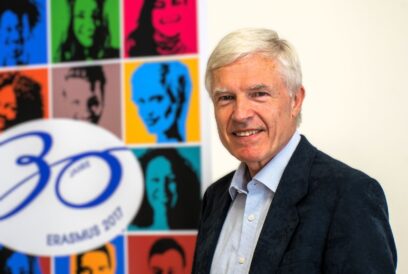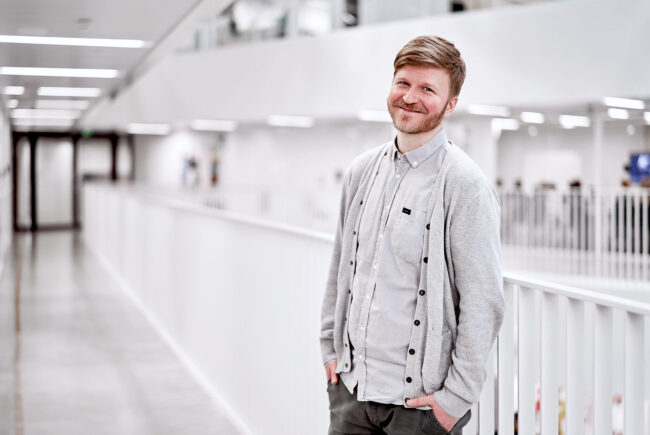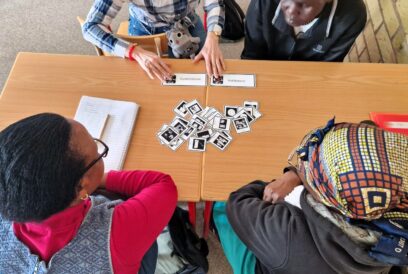

Akseli Huhtanen feels the discussion around online education is often too technology-oriented. “The purpose of this design book is to focus not on technology, but on the pedagogical principles which apply to online learning.”
A Finnish design book for web-based learning highlights the benefits of Open Educational Resources
Published:Akseli Huhtanen feels the discussion around online education is often too technology-oriented. “The purpose of this design book is to focus not on technology, but on the pedagogical principles which apply to online learning.”
Initially created to benefit technical universities in Finland, the Design Book for Online Learning has found a larger audience – thanks to open access and active citizenship.
How to ensure the quality of learning on an online course, if both teachers and learners are scattered around the country, and some of them have never led or taken an online course before?
This was the question that learning designer Akseli Huhtanen set to answer a few years ago, when FITech Network University – a network of eight Finnish technical universities in Finland – began to target new learners with online courses.
“It was clear that we could not help all of the lecturers individually in building an online course. We needed a guidebook which would assist staff to begin teaching online, even if they had no previous experience in it”, he says.
The purpose of this design book is to focus not on technology, but on the pedagogical principles which apply to online learning.
According to Akseli Huhtanen, the discussion around online education is often very technology-oriented, overlooking the more important aspect.
“The purpose of this design book is to focus not on technology, but on the pedagogical principles which apply to online learning”.
The Design Book for Online Learning was published in 2019. It has not only aided Finnish university lecturers in building online courses, but also gained a lot of international attention.
Dissemination through voluntary translation
Education professionals from several European countries have since contacted Akseli Huhtanen to hear more about his creation, and a Polish version of The Design Book for Online Learning was recently published on EPALE.
Bohdan Kamiński, creator of the Polish version, was first introduced to Finnish education by the popular Elements of AI -course (a free online introduction course to artificial intelligence), and as a keen learner and internet user he decided to see what else Finnish universities could offer.
“When I found the Design Book for Online Learning, I knew I had come across something valuable. The quality of online courses and adult education in Poland need improvement. So I thought I should contribute, and decided to do a voluntary translation”.

Bohdan Kamiński came across The Design Book for Online Learning by chance, and decided to translate it into Polish.
He set to work together with Marta Dobrzyniak, PhD, who is the scientific editor of the Polish version. Thanks to them, education providers in Poland now have a useful tool to help them transfer learning to the web.
According to Bohdan Kamiński, the design book is concise and easy to approach.
“It gives you a better understanding of the nature of learning alone, with a screen in front of you, and also brings attention to the human and social dimension of the process”.
Creative Commons license enables sharing of learning materials
Akseli Huhtanen is of course pleased to see his work spread into further use in other countries.
“I was a bit surprised by the international attention”, he admits.
It is worth noting that without a few key factors this might not have happened at all.
Firstly: the material was published not only in Finnish, but also in English. The English version was created by default, so that the international staff in Finnish universities could also benefit from the material.
Secondly, the design book was published under a Creative Commons license, which enables others to access, share and even modify the resource without running into copyright issues.
“I believe this is the way publishing should be done – especially in projects which are funded by public money. Creating Open Educational Resources (OER) is highly motivating and can lead to new, surprising ideas”, Akseli Huhtanen says.
Universities could adapt new validation methods
Creating and sharing Open Educational Resources is certainly one way to break the boundaries and increase collaboration between educational institutions and learning cultures.
The FITech Network University is in fact an example of this. It was founded to address a local lack of qualified industrial engineers. Since then it has expanded and evolved from university degree education to adult education which focuses on continuous learning.
As Akseli Huhtanen points out, this presents a challenge for validating learning.
Creating Open Educational Resources is highly motivating and can lead to new, surprising ideas.
“Learning can happen within a smaller entity than a course. Validation methods such as digital badges have already been implemented successfully within the field of non-formal adult education. This is an example that also universities could learn from”.
In Poland, Bohdan Kamiński sees a few issues that stand in the way of deeper collaboration in European education. Validation is certainly one of them.
“If validation and recognition of prior learning is expected to work properly in line with the European Qualifications Framework, we need to develop an inventory of methods, standards and qualities that work in a specific socio-cultural environment and are based on scientific fundamentals. There are lots of fake models of education, which are widely promoted worldwide and have no theoretical foundations”, he says.
And even though Bohdan Kamiński found the Design Book for Online Learning while browsing the internet, he claims that the odds for this happening are actually not great.
“A chance that someone will spot what other people have developed is close to zero. So some kind of a speaker’s corner, forum or another platform would be helpful, provided it is managed according to scientific standards”.
There’s a task for someone else.






